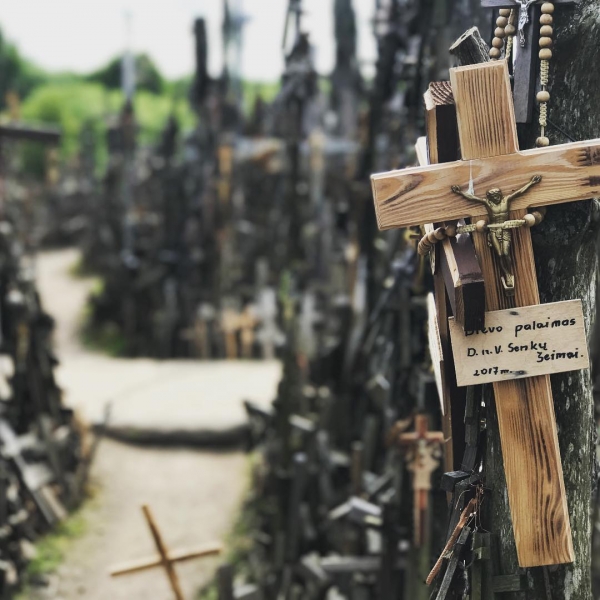2018 is European year of Cultural Heritage. And cross-crafting is one of the biggest cultural heritage for us – Lithuanians. Every time we start talking about it, most of the foreigners furrow their foreheads, widen their eyes and ask what’s that. But there’s a small part of foreigners who knows exactly what that is. So, let us explain it to you in simple words.
Lithuanian cross-crafting is a traditional Lithuanian art of crafting crosses, usually creating altars and crosses. It all has begun since pagans were existing in Lithuania, having links to memorial poles signifying the pagan world tree. It has been cherished till Lithuania became a part of the Russian Empire in the 19th century, these crosses have become a symbol of the Lithuanian people and then after regaining the Independence in 1991, this beautiful tradition came back.
Moreover, these stylized crosses are made of oak wood and have few iron elements. One can be up to five meters high and they often are visualized with floral or geometric symbols, motifs of the sun, birds and the tree of life. The crosses are built as memorials to the dead or as the signs of spiritual protection at certain places. Traditional Lithuanian crosses could be built and located in various locations: near roads, in cemeteries, villages, or churches.
 |
 |
| (c) ESN VMU | (c) Oscar Fanelli |
If you want to see some examples, you don’t need to go wandering around in small Lithuanian villages though. There is a special place in Lithuania dedicated to crosses – Hill of Crosses. It is located in the north of Lithuania, not too far from the 4th biggest city in the country – Šiauliai.
It’s not much of a hill, really, but the place has a significant number of crosses. Once it was counted to be 200 thousand of them but up to date people are adding new ones. You can add too.
The Hill of Crosses was first time mentioned in 19th century. It started being populated with crosses after the rebellion against Russian Empire in 1831. Many people were killed, and their loved ones began to bring crosses to this particular hill in their honour and memory. It soon became sacral place for people, symbolizing hope. Even after being destroyed multiple times by Soviets, it was reborn soon after because people never stopped having hope and kept adding new crosses.
Nowadays, the Hill of Crosses is considered to be a monument of belief by Catholic Church. It is one of the most unique places in Lithuania, attracting people of all religions and beliefs, from all around the world.

Follow us